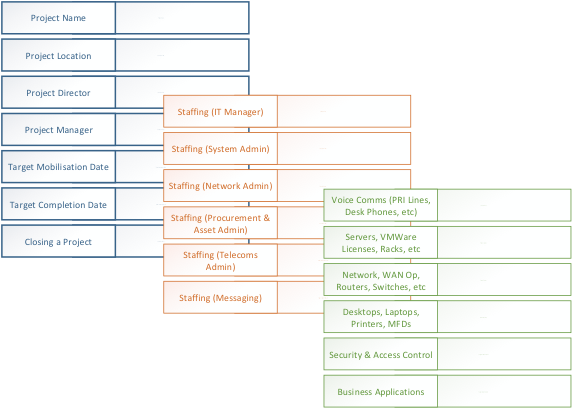
Project Initiation
Project Initiation
Project Initiation is pretty much Document Control:
- Where are you going to keep those documents?
- Who are you going to tell about the project and how will you tell them?
- Project Definition
- Client/Customer Engagement
- Project Kick-Off

Where are you going to keep those documents?
Keeping and tracking the project documents is more important than where or how you keep them. Clearly some systems are better suited to this and depending on the size of the project, some systems might be too much work or not offer enough checks and balances to ensure you’re staying on the right track.
Some of your document management choices include:
- SharePoint
- An EDMS (Electronic Document Management System)
- Google Drive
- Microsoft OneDrive
- A CMS (Content Management System)
- Your local Computer
- A bundle of paper
- Something else…
- It doesn’t actually matter as long as you can find it, manage it and share it with others
Who are you going to tell about the project and how will you tell them?
If you’re new to this game, you’ll quickly realise that Project Management is really about communication, planning and administration activities. Deciding who you’re going to tell and how often can sometimes be dictated by a higher function, in the PRINCE2 world this might be defined in the Directing a Project stage.
Ultimately the main point here is that you need to tell people that you have a project, perhaps you’ll identify the team at this stage and you’ll let people know if you think you’ll need their input at some point.
- Project Award email
- A message
- A post-it
- A meeting
- Just a casual mention?
Project Definition
The Project Definition is the act of bringing everything you know about the project so far together, this may be in something like a Project Initiation form or a Scope Clarification document for example.
This is where we start building up the paperwork, so far we’ve allocated a space for the paperwork, we’ve started identifying some key players and now we’re going to document that and start building templates that we can use throughout the life of the project.
- Do you understand the scope?
- Capture the scope, stating the stakeholders and other key players
- Stakeholder analysis
- How are you going to manage your documents, communications and stakeholders?
- Who will make up your project organisation?
- How and how often will you communicate and with who?
- Execution Plan
- Estimate
- RAID Log
- A High Level Schedule
Client/Customer Engagement
For some of your projects, you’re going to be working with Clients or Customers. That Customer could be anyone from A-N-Other Company (business-to-business), Mrs Jones (and her loft extension), Your Family (home improvements), your Departmental Manager (server upgrade project) as a number of examples.
This may involve one or more meetings to thrash out the early project scope or it may be an information gathering exercise so that you can identify who to contact and when.
- Remember a customer can be an internal party
- How are you going to engage with them?
- Do they need to provide input into your plan?
Project Kick-Off
We’re getting to the end of the stage now, this is when stuff starts getting real! For an IT Infrastructure project, this might be where we bring in a number of functional teams or the team leads and give them an overview of the project. In my case, my projects are rarely IT centric, these are much bigger Programs that involve an element of IT. As such, my IT groups may know that I need a server room but may not understand the location, the bigger Program or any very specific risks and or requirements. This is my opportunity to engage the people I will depend on in order to deliver this project successfully.
How you approach this is down to you, your organisation or your project. We tend to hold one or more presentations so that we can get people on board, run through the project and explain how their part fits in and then give them a very high-level schedule with the aim of at least letting them know when they should expect a follow-up meeting.
- If you need input from others, then they’ll need to be informed before you can start your Planning activities
- Examples might be that you need someone to build you a server room or a coffee table
- You need to know how long it will take for them to build this so that you can build that into your Plan
- But they need to know that you need something and when by
- This is the time to get them engaged
